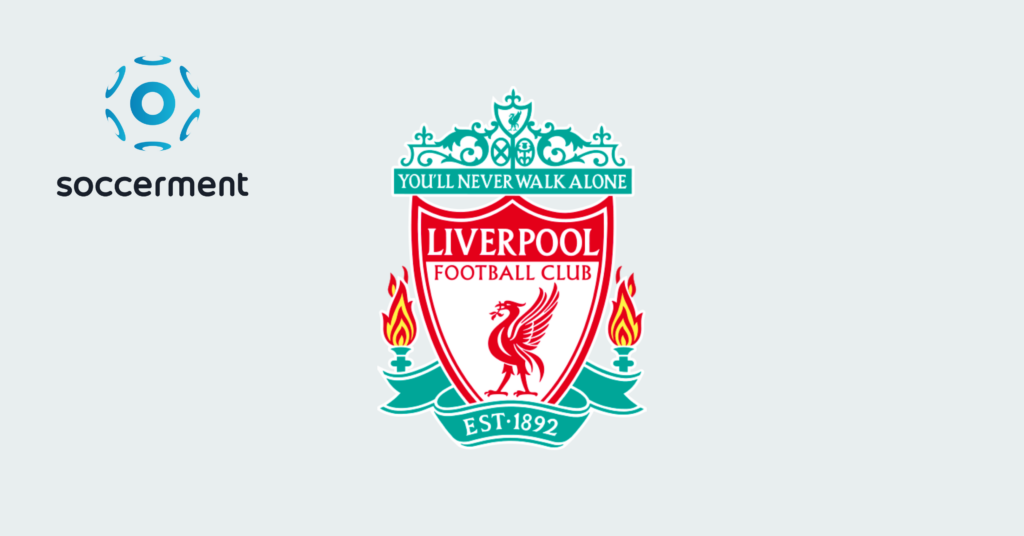
This summer, Liverpool are undergoing a full-fledged revolution in their midfield. The simultaneous departures of Fabinho, Henderson, Milner, Keita and Oxlade-Chamberlain mean that the Reds are seeking to rejuvenate the squad, adding fresh legs able to keep up with Klopp’s demanding play style. The arrivals of Szoboszlai and Mac Allister for a combined fee in the region of €112m already represent a big step towards achieving this goal. However, Liverpool still seem to be lacking a more classic defensive midfielder, or Ball stealer according to our player functions model, which was the role covered by Fabinho.
In that position, Liverpool could currently field Thiago or Bajcetic. However, while he can provide a good defensive work rate, Thiago offers the most value in possession, as a typical Buildup director and would be limiting his creative output if played in a more defensive role. On the other hand, Bajcetic probably still lacks the experience to feature week in week out as the go-to player for a team as big as Liverpool. An alternative in the build-up phase is represented by Alexander-Arnold who has been tucking in as an inverted full-back, aiding the holding midfielder in distribution with his elite passing. Therefore, in our analysis we will be looking to seek a profile which can replace Fabinho in Klopp’s tactical system.
Data set and player ranking
As an initial sample, we selected all central midfielders (CM) and defensive midfielders (DM) in the top 7 European leagues (Premier League, La Liga, Bundesliga, Serie A, Ligue 1, Primeira Liga, Eredivisie), with at least 900 minutes played between the past two seasons (2021/22 and 2022/23).
To find an ideal replacement for Fabinho, we then selected a set of stats specifically tailored to the role he played inside Liverpool’s game plan. This naturally implies an almost exclusive focus on defensive metrics, as the Brazilian’s main task was to shield the back line and win back possession, balancing the attacking duties of players around him. With this in mind, we collected data on tackles and interceptions, ball recoveries and counterpressing actions. When dealing with defensive stats such as these, it is usually best to normalise them accounting for defensive opportunity: a player can only perform a defensive action when the opponent team has the ball. Therefore, these metrics are normalised per 1000 opponent touches (P1000). We also consider a key characteristic of a DM, i.e. ball retention, by taking the number of balls lost per 100 touches (P100). Naturally, the reverse ranking will be considered for this metric, since good ball retention skills imply fewer lost balls. Finally, we complement these counting stats with a few key success rates, specifically for ground duels (including tackles and dribbles), aerial duels, and short passes.
We summarised the performance of players by taking a weighted average of their percentile rank in each of these metrics, giving a 25% higher weight to ball retention, a 25% lower weight to ground duel success rate and ball recoveries and a neutral weight to the rest. In our view, this method yields a ranking that is most relevant to the targeted player profile. We also computed a percentage similarity with respect to Fabinho’s profile, using the same weights for the metrics described above.
We used the weighted average rank described above to produce a shortlist of the top 15 U25 players in our dataset, which is shown in the bar chart below, together with the players’ similarity score. We also introduced an age filter to be consistent with Liverpool’s typical transfer strategy, which has usually focused on pre-peak or early-peak aged players, even at the cost of discarding some players who would fit nicely into Klopp’s system. This strategy has continued this summer as well, as we have seen with Szoboszlai (‘2000) and Mac Allister (‘1998).
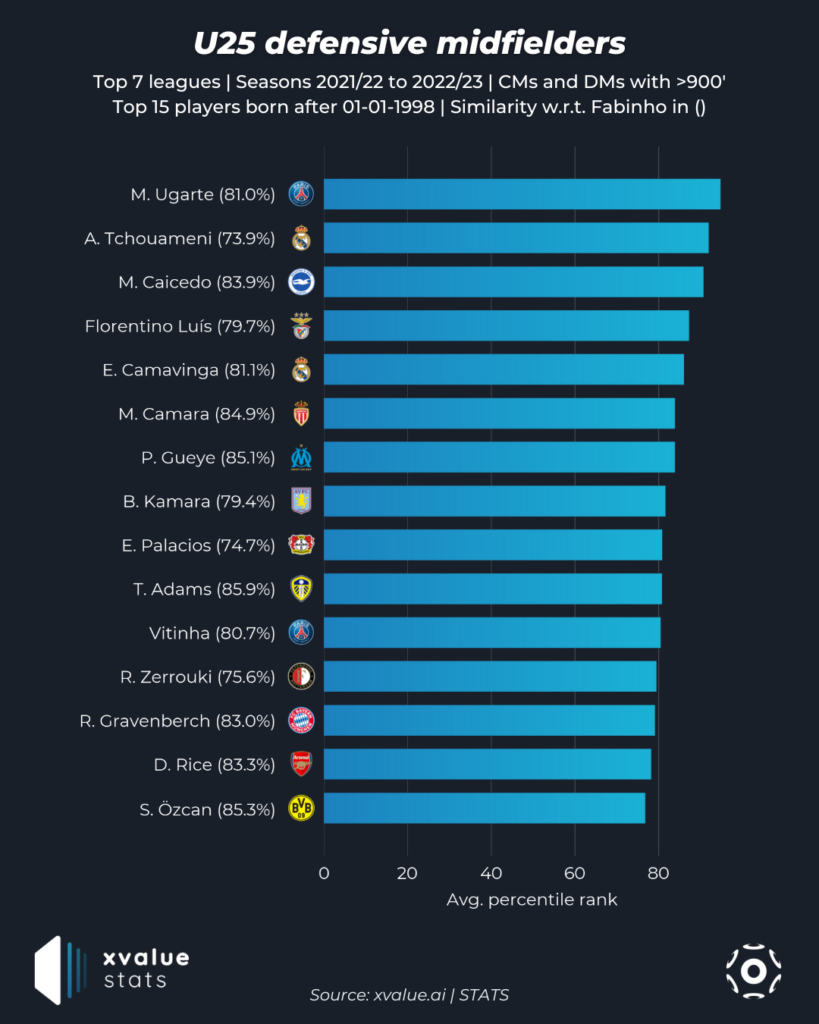
Our ranking method successfully singles out some of the best defensive midfielders in elite football, some of which have signed for top clubs for large fees in previous transfer windows (Tchouameni, Camavinga, Vitinha), in the current window (Rice, Ugarte), or are expected to do so in the near future (Caicedo). However, there are several names which have flown somewhat under the radar, allowing us to single out different profiles for three different price ranges, according to public estimates on their valuation: low-cost, medium-cost, and blockbuster-level potential signings.
Low-cost targets: Gueye and Adams
Among the most similar profiles to Fabinho in our shortlist, we have Pape Gueye (85.1%) and Tyler Adams (85.9%, the most similar in the shortlist according to our analysis). Both players should be relatively affordable for Liverpool and could probably be signed for less than €20m. Gueye’s valuation in particular is the second lowest among players in the shortlist (also, his contract with Marseille expires in 2024) and could prove to be a bargain. On the other hand, USMNT’s Adams has been recently sidelined with a hamstring injury and has just been relegated with Leeds. This could play a significant factor in lowering Leeds’ asking price, and in fact it has been reported that the US international has a relegation-related release clause in his contract. Having said that, what are the characteristics and key differences between the two players?
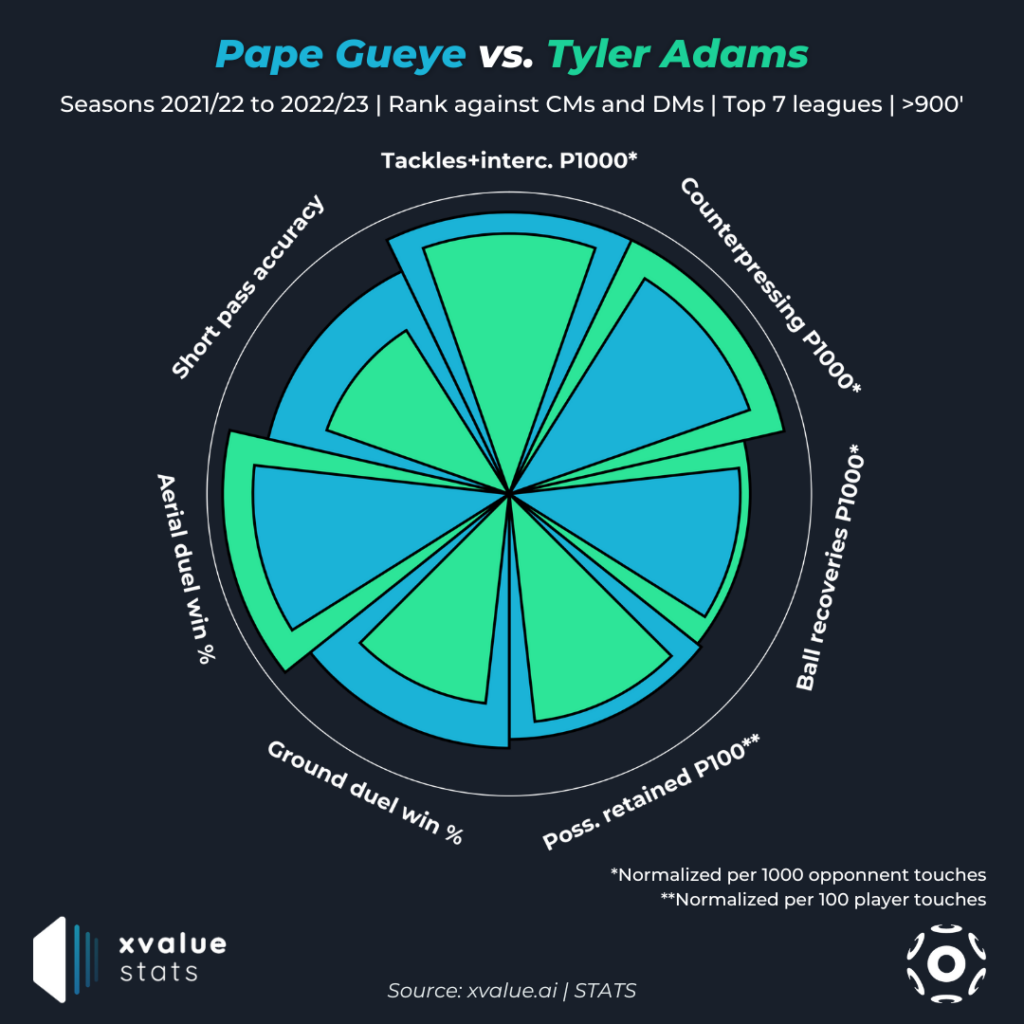
Adams is a defensive-minded player with great mobility which he uses to quickly snuff out opposition attacks. At Leeds, he was part of a very pressing-oriented team, where he stood out for the number of counterpressing actions (66 in 2022/23, 5th highest in the Premier League). Among the stats considered in our analysis, Adams ranks best in terms of counterpressing actions (4.0 P1000, 93rd percentile among all players in the sample) and aerial duels (64.8% success rate), in spite of his relatively short figure (173 cm tall). Given the American’s focus on defensive work, he shouldn’t be expected to dictate the tempo of a team, also considering that the very dynamic style adopted at Leeds certainly didn’t highlight playmaking abilities. Therefore, he would probably benefit from playing alongside someone like Mac Allister who could serve as a more traditional playmaker.
Gueye has just come back to Marseille from a 6-month loan at Sevilla, where he found space in league matches, being ineligible to play in the victorious Europa League campaign. He stands out within our dataset particularly for tackles and interceptions with 7.34 P1000, putting him in the 93rd percentile among all players (before the age filter). His return of 1.71 interceptions P90 is among the best in La Liga. Similarly to Adams, Gueye’s value lies mostly in defensive work rate, and he would therefore also need to be surrounded by players focused on build-up tasks such as Mac Allister or Alexander-Arnold.
Medium-cost targets: Gravenberch and Camara
We singled out some medium-cost potential signings as well, in case the allocated budget for this transfer would be higher.
Ryan Gravenberch hasn’t had much playing time since his 2022 transfer to Bayern Munich for €18.5M (widely considered a bargain and will be seeking to be more involved with the German champions, or potentially elsewhere). While he has mostly played as a double pivot or mezzala in his time with Ajax, he has the characteristics and the physicality to feature in Liverpool’s midfield and give Jurgen Klopp more options. Having played with Ajax, he is accustomed to a possession-based game and aggressive pressing strategies. In fact, he ranks among the best for his role in Counterpressing actions P1000 (96th percentile) and ball recoveries P1000 (91st percentile). Furthermore, his physicality aids him in aerial duels (60.9% success rate, 89th percentile). Perhaps unexpectedly, Gravenberch doesn’t perform as well in ball retention (18.5 possession losses P100, 59th percentile). All things considered, Gravenberch represents a very interesting opportunity on the transfer market, however, he might not be as natural a replacement for Fabinho, but might be a better fit for a different midfield structure, such as one with a double pivot.
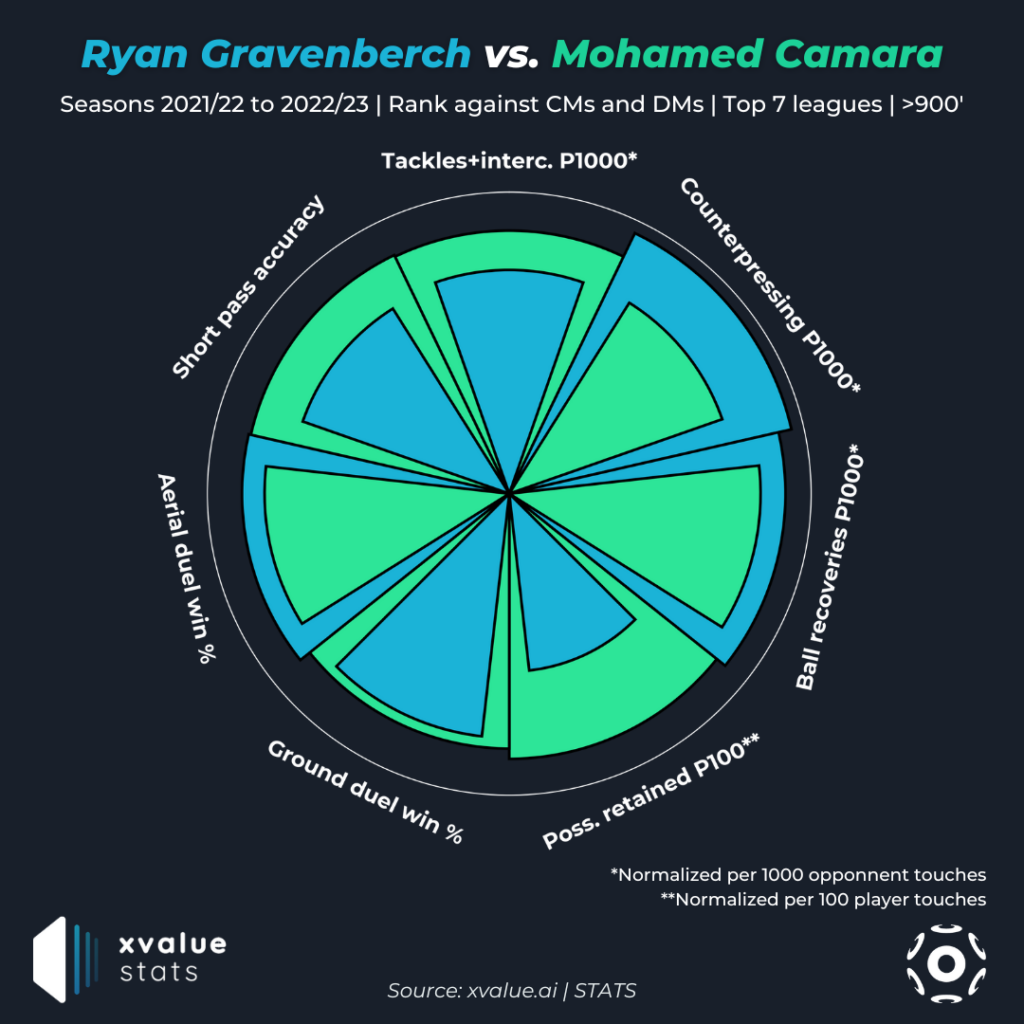
Mohamed Camara, on the other hand, has completed his 1st season with Monaco after arriving from RB Salzburg for €15m, and has already had the chance to shine with the Monegasque club. The defensive midfielder ranks highly both for defensive actions such as tackles and interceptions (6.79 P1000, 87th percentile), but also for actions in possession such as progressive passes 3.79 P90 (0.07 xT from passes ranks him 4th among Ball Stealers in Ligue 1). His physical skills which combine strength and dynamism make him adept at covering ground defensively and starting attacks during transitions. His technical ability isn’t exceptional but remains solid, allowing him to retain the ball (14.4 possession losses P100, 88th percentile) and be proficient in short passing. All in all, Camara represents a very solid candidate for the succession of Fabinho in Klopp’s system. His performances last season might justify higher bids compared to the one that brought him to Monaco, probably in the region of €30m.
Blockbuster signings
The top 5 profiles in our analysis are considered particularly expensive. Only Florentino Luis has a more reasonable asking price (reports in June claimed that his asking price was set at around £25m or €30m). However, we decided not to include him in our previous cost bracket as the other profiles mentioned represented, in our opinion, more suited profiles, as indicated by their similarity score with Fabinho. The other 4 top names on the list were Ugarte, Tchouaméni, Caicedo and Camavinga. We decided to consider Caicedo as he is the only player with a concrete possibility to leave his club:
- Ugarte, which we considered the best choice, has just been signed by PSG in this window. The only potential downside is that he has been playing in a team which is pretty dominant in the Primera Liga as opposed to other top-ranking players, who play in more competitive leagues.
- Tchouaméni has been given the task to replace Casemiro and is considered a pillar of Real Madrid’s future. Taking him away from the Bernabeu seems an impossible task, as the Blancos paid an important fee to sign him (€80m) and should be financially solid enough to have little pressure to make big sales in the near future.
- Camavinga, much like Tchouameni, is considered very important for the future of Real Madrid, even though he has seen less playing time than his compatriot, so once again luring him away from the Spanish giants would probably require an unreasonable bid, which is not how Liverpool usually operate.
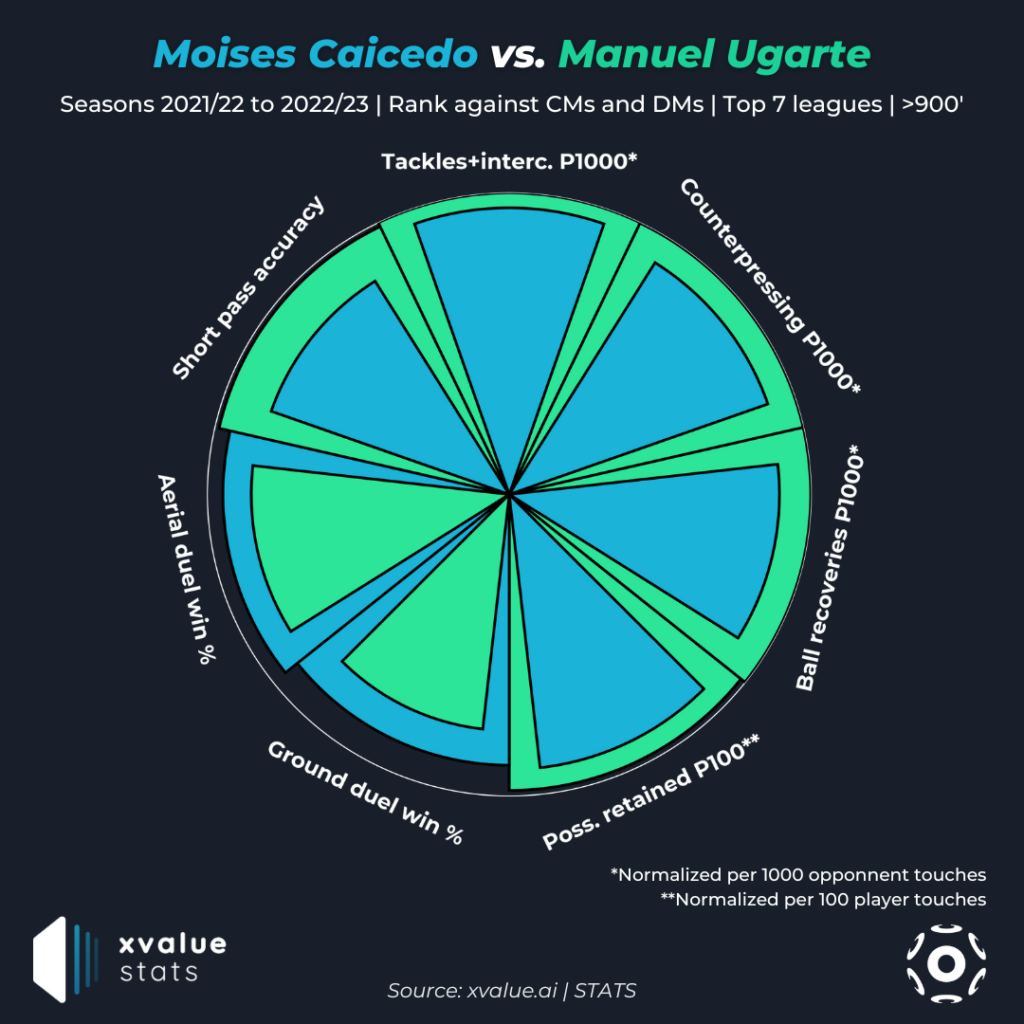
Ever since January, Brighton’s Moises Caicedo has repeatedly been linked with Premier League giants such as Arsenal (who opted to sign Rice for a record fee) and most recently Chelsea. Apparently, the asking price for Caicedo has been set at £100m, which would represent one of the most expensive signings in history. However, Caicedo does possess unique qualities which would fit very well into Liverpool’s midfield in Fabinho’s role. First of all, his defensive work rate is impressive, placing him above the 90th percentile in our CM/DM sample for tackles and interceptions (95th), counterpressing actions (91st) and ball recoveries (90th). Furthermore, he is a reliable player in possession, entrusted by De Zerbi to handle the ball in tough situations. As a result, he records just 13.4 lost balls P100 (91st percentile), which is impressive considering that Brighton’s style of play actually lures in pressure from opponents. He also ranks highly in aerial duels in spite of his height (1.78m, 95th percentile in aerial win rate), as well as ground duels (90th percentile for win rate).
In conclusion, Caicedo is an almost ideal candidate to replace Fabinho, however, Brighton’s asking price is very high, meaning that his signing would probably come at the expense of other signings, would carry a significant degree of risk, and would potentially drag Liverpool in a bidding war, which they usually try to avoid. Nonetheless, he simply represents the best you can find on the market for this position.
Special mention: Romeo Lavia
Numerous reports have linked Liverpool to Southampton’s Roméo Lavia, with a transfer fee rumoured to be in the region of £50m. But how does the young Belgian’s profile compare to Fabinho’s?
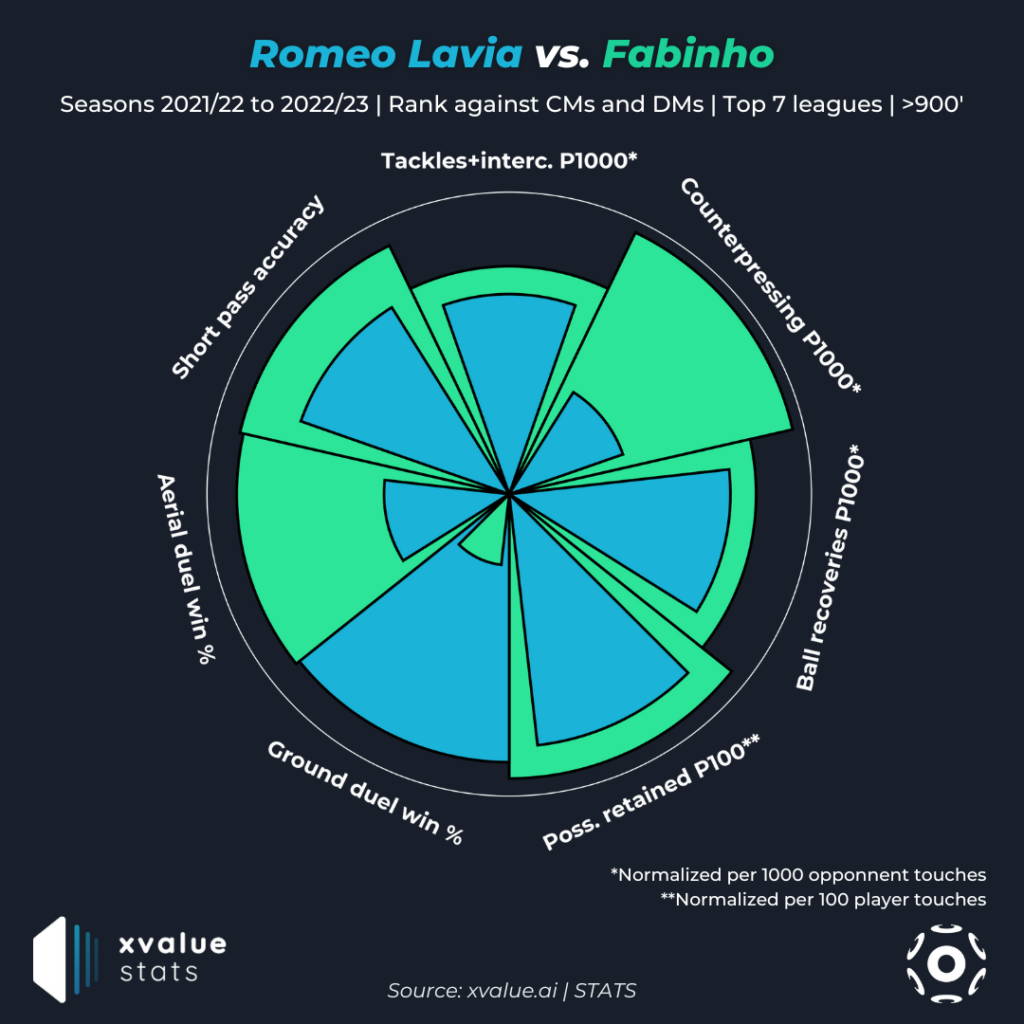
Lavia’s main strength in the metrics considered for this analysis lies in his ground duel win percentage (55.9%). On the other hand, he ranks relatively poorly with regard to aerial duels (44.4% success rate) and counterpressing actions (2.4 P1000). However, Lavia’s performances need further contextualisation. First of all, he is only 19 years old and plays a role where experience plays a considerable part (knowing which position to occupy in every moment on the pitch isn’t an easy task). He has just finished his 1st season of Premier League football in a side which finished bottom of the table, meaning he didn’t have the chance to express himself to the fullest extent during the build-up phase and was put under severe pressure during opposition attacks (only Leeds conceded more goals than Southampton last season in the PL). So, if Lavia were to slot into a stronger team with a different style also his performances and underlying stats would probably change (Liverpool’s focus on counterpressing is a clear example).
Overall, our data indicate Lavia as an excellent prospect for the defensive midfield role, ranking 1st among all U20 players considered in this analysis. In the context of a team as big as Liverpool, he would probably fit best as a backup to a more experienced player, gathering minutes as a sub in the Premier League as well as in cup games. However, such a profile would hardly match the rumoured transfer fee, which would probably be more appropriate for a more experienced player, ready to hit the ground running as a more regular starter in the DM role.

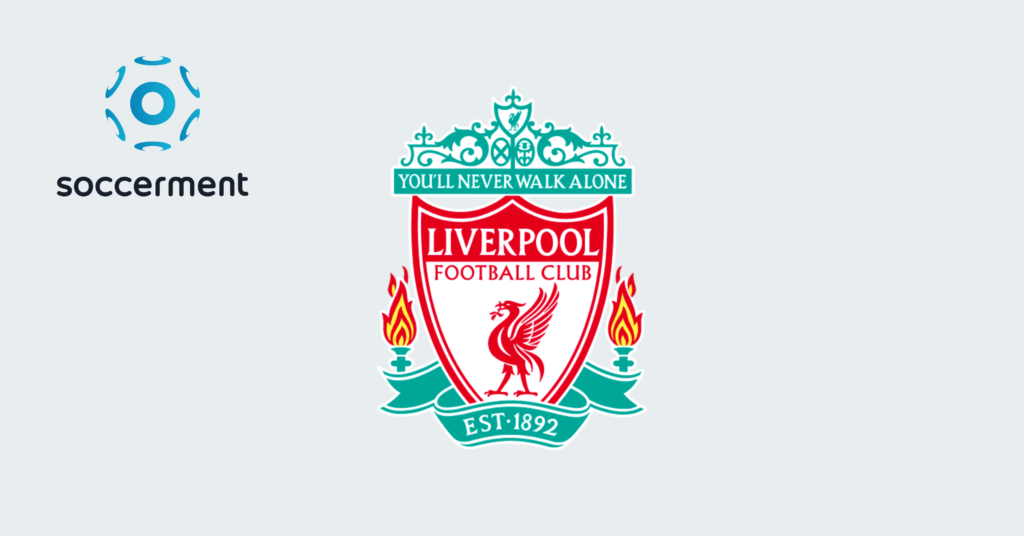
Lascia un commento